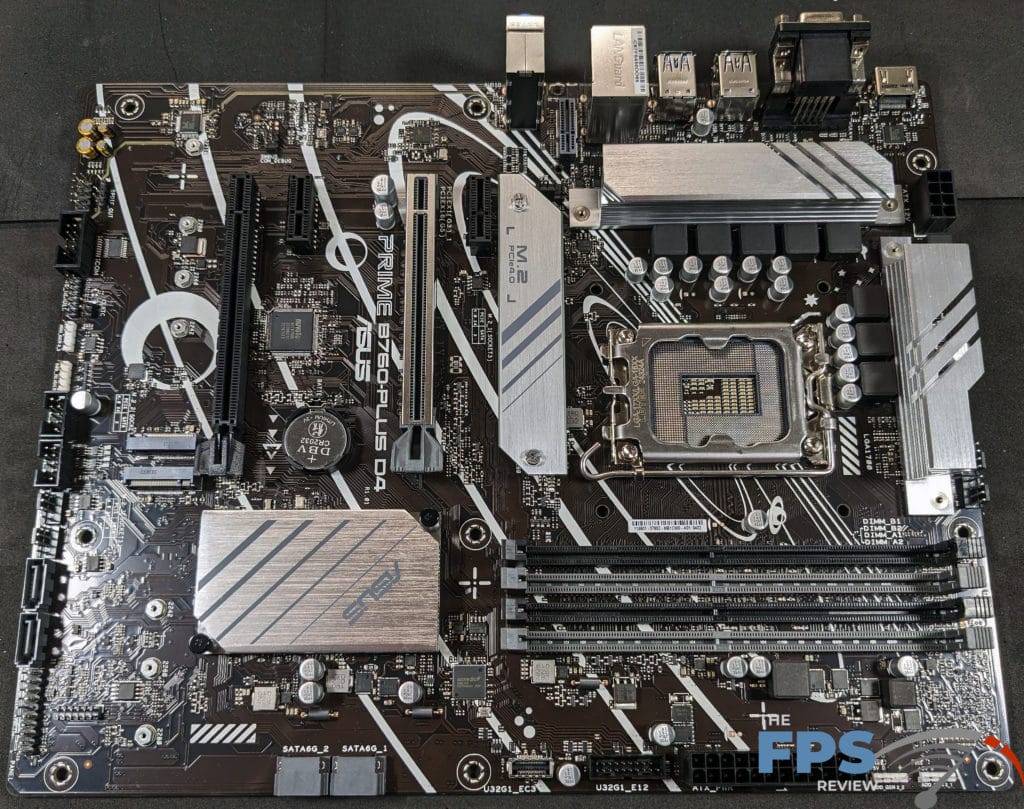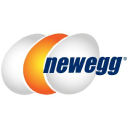
Introduction
The motherboard we are looking at today is the ASUS PRIME B760-PLUS D4. It is an LGA 1700 socket motherboard supporting Intel’s 12th and 13th generation CPUs. At the time of this writing, the ASUS PRIME B760-PLUS D4 comes in at around $160. As a result, it’s a budget-oriented motherboard. It’s essentially stripped down but still retains full CPU support for the latest Intel CPUs.
ASUS has several motherboard series’ including its TUF, Prime, ProArt, CSM, Workstation, and ROG series motherboards. There is some overlap between the TUF series and the Prime series, but generally speaking, the Prime offerings are some of the cheapest outside of the CSM stuff which isn’t for enthusiasts in the first place.
Intel B760 Express Chipset
Intel’s B760 chipset has many of the same features as its Z790 Express counterpart albeit, with fewer PCIe lanes, fewer SATA ports, and fewer USB ports. You don’t get PCIe/NVMe RAID support either. However, RAID on SATA devices is supported. It does support PCI-Express 5.0, 4.0, and 3.0. In general, you are looking at about half the PCIe lanes by choosing B760. You will also only find memory overclocking with B760 whereas you can use BCLK, etc. on Z790. Below is a general block diagram of the B760 chipset provided by ASUS for reference.

Packaging & Contents
As a budget-oriented motherboard, there isn’t much in the box. In fact, the packaging is one of the thinnest I’ve ever seen. It doesn’t feel like it weighs a lot either. Inside the box, you’ll find the ASUS PRIME B760-PLUS D4 motherboard itself, some M.2 screws, a user guide, an I/O shield, and some SATA cables.



ASUS PRIME B760-PLUS D4 PCB & Features
When it comes to power delivery, ASUS doesn’t even say in any of its printed materials or website what the specifications are of its VRMs, chokes, or other components. Without removing the rather anemic heat sinks I couldn’t tell you. Suffice it to say, the power delivery is at best some type of 7+1 solution, and knowing ASUS, it’s probably more like a 4-phase solution with two chokes per phase or something to that effect. There is only a single 8-pin power connector and the motherboard really isn’t designed for overclocking anyway. We tested this motherboard with a 12900K which is probably more demanding than what most people will pair this board with. (More on that later.) As a result, I wouldn’t be too concerned with the lack of beefier VRM hardware.


That being said, given its price point I don’t think 13900KS buyers are shopping for B760 boards anyway. The PCB is pretty thin, and my first impression is that this thing is essentially stripped. It’s a bit more stylish to look at than your typical OEM stuff but it’s more in that vein in terms of construction. That’s not to say there is anything wrong with this, it is what we would expect for a motherboard at this price point.
On the PCB, you will find 1x, 4-pin CPU fan header, 1x, dedicated 4-pin AIO pump header, and 3x 4-pin chassis fan headers. You will also find 3x addressable RGB headers, 1x Aura RGB header, 1x clear CMOS button, and a Thunderbolt header. What you won’t find is RGB lighting of any kind. While the headers are there, no LEDs can be found on the PCB itself. You don’t even get one in the chipset heat sink.
When it comes to expansion, being a B760 chipset-based board does limit the USB port count compared to Z790. That said, you have plenty of expansion capability here. You have 3x M.2 slots. M.2_1 slot supports type 2242/2260/2280 devices using up to 4x PCIe lanes. M.2_2 supports type 2242/2260/2280/22110 devices using 4x PCIe lanes. Lastly, M.2_3 supports type 2242/2260/2280 using 2x PCIe lanes. The ASUS PRIME B760-PLUS D4 also supports up to 4x SATA devices.

As usual, there are four DDR4 DIMM slots supporting memory sizes up to 128GB using 32GB DIMMs. Speeds in excess of DDR4 4000MHz are supported. ASUS uses what it calls its “Optimem.”
As for PCIe slots, the B760 chipset doesn’t have as many lanes as the Z790 does. However, there is still a decent amount of expansion capability here. The ASUS PRIME B760-PLUS D4 has 1x PCIe 5.0 x16 slot, 1x PCIe 4.0 x16 slot (x4 electrical), and 2x PCIe 3.0 x1 slots. The ASUS PRIME B760-PLUS D4 has 6 USB ports on the rear I/O panel and 7 via internal headers for a total of 13 ports. They are a healthy mix USB 3.2 Gen 2 and Gen 1 ports.

The I/O panel is relatively sparse at this price point. There are 6x USB ports, 1x Type-C port and the rest are Type-A ports of various speeds. You will find a single RJ-45 port supporting 2.5GbE speeds. There is a DisplayPort port and a D-SUB connector that takes me back to the 1990s. Lastly, we have 3x mini-stereo jacks for analog audio. You don’t even get an optical out which was surprising to me. I don’t think I’ve ever seen a motherboard without one since the AC97 audio days when motherboards first started coming with onboard audio.
Even so, the onboard audio does have premium audio capacitors, PCB isolation, and 7.1 HD audio. It’s a Realtek implementation but ASUS doesn’t give any specs on it. My guess is its an older CODEC as it isn’t the newer USB-based ALC4080. It’s most likely an ALC1220 or even ALC897.
The lack of a built-in I/O shield is also somewhat surprising but only because that keeps trickling down to lower and lower price points every product cycle. So it was odd not to see that either, but on reflection that’s not surprising for $160 given the current ceiling on motherboards being more than 10x that.


